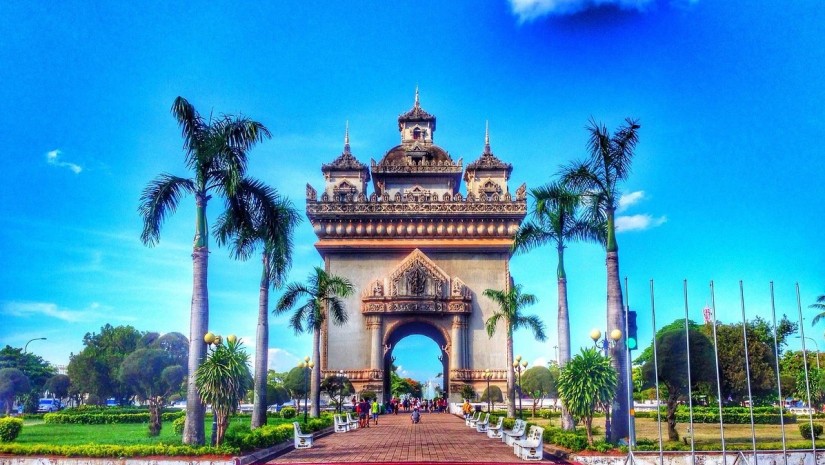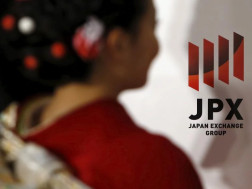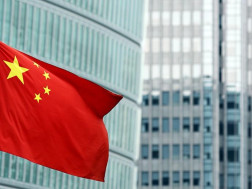Laos is often referred to as the "Land of a Million Elephants" due to its historical association with elephants. The name is more of a poetic or symbolic expression rather than an accurate count of the number of elephants in the country. French Indo-China comprises modern-day Vietnam, Cambodia, and Laos.
In the Indochina region the French used to say: “The Vietnamese plant the rice, the Cambodians watch it grow and the Lao listen to it grow”
Laos is a Theravada Buddhism country and the motto on the e-visa is Peace, Independence Democracy Prosperity.
Laos, while experiencing economic growth, has a significantly smaller economy compared to other Indochina economies like Vietnam or the kingdom of Cambodia. Laos’ economy has been driven by sectors such as hydropower, agriculture, and tourism. The Lao Securities Exchange (LSX) was officially opened on 10th October 2010. Both the Cambodia and the Laos Stock exchange were established with technical support from South Korea and its KRX Korea exchange.
Spirituality and religion play a deep role in the country of Laos, and there are plenty of old traditions that are still being practiced to this very day. The current population of the Lao People's Democratic Republic is 7,686,147.
Laos, Southeast Asia’s smallest economy, needs structural transformation and economic diversification to create jobs for a young population and sustain growth. According to the Asian Development Bank, the Gross Domestic Product (GDP) of Laos is expected to grow by 4% in 2024.
Laos is one of the smaller economies among the ASEAN (Association of Southeast Asian Nations) countries and its stock market is relatively new and still small. Laos is classified as a true frontier market similar to Cambodia, the bigger story and potentially rather profitable investment opportunity is the potential re-rating of Vietnam from a frontier market to an EM emerging market.
The Kingdom of Cambodia is a USD dollar-based economy and LPDR Laos People's Democratic Republic is a LAK Laos Kip currency-based economy.
Worldwide gross domestic product in 2022 was at about 12,703 USD per capita. GDP in Laos, on the other hand, reached USD 2,054 per capital two years ago, or 15.47 billion USD for the whole country. Laos is one of the smaller ASEAN economies and is currently ranked 134th largest or rather smallest economies in the world.
The five-year tourism development plan for the Lao PDR 2021-2025 outlines the specific activities that are relevant to the tourism sector. Beautiful Laos is the tourism slogan and most probably still under appreciated by investors & tourists alike.
Luang Phabang, or Louangphabang, commonly transliterated into Western languages from the pre-1975 Lao spelling ຫຼວງພຣະບາງ as Luang Prabang, literally meaning "Royal Buddha Image.
The UNESCO town was listed in 1995 for unique and "remarkably" well-preserved architectural, religious, and cultural heritage, a blend of rural and urban developments over several centuries, including the French.
Inflation in Laos in 2022 was around 22.96%. Within the EU, the average in the same year was 8.83 percent. In the United States, it was 8.00%. current USA inflation is estimated at around 3% 12-month USD dollar deposit rates in Cambodia can range from 7% to 8.5% on American dollars at the moment. Laos domestic banks pay 9% on local LAK deposits.
South Korean commercial banks and their Indochina local retail bank franchises offer attractive united states dollar deposit rates. Most probably one of the best places for USD fixed deposits globally. South Korean commercial banks active in Cambodia and the wider Indochina region are the ultimate legal risk ROK republic of Korea (South Korea).
In the spirit of progress & advancement, the Laos exchange is called the Laos Securities exchange and lists both equities and fixed-income instruments.
The LAOS exchange is the second-smallest by market capitalization among 84 global bourses tracked by Bloomberg, after Swaziland.
The bourse’s goal has changed from helping the country’s economic development at the start to financial independence now.
For the 12th year, the Lao Securities Exchange (LSX) has actively contributed to developing the Laos economy, especially by providing comprehensive mechanisms and facilities to ensure that all parties in the capital market get the benefit or common prosperity.
The average monthly income in Laos is 193 per capita. In the USA, the figure is 6,398 . However, the prices of consumer goods are also around 73.5 percent lower than in the USA. If you compare income and price levels, the result is a more expensive life in Laos than in the United States. The bottom line is that the costs do not offset the lower income, and you get about 88.7 percent less.
Laos has a legal system based on civil law principles, specifically influenced by the French legal system. The legal framework is codified, and laws are derived from statutes and regulations.
Laos has implemented laws and regulations to attract foreign investment. These laws outline the procedures for establishing businesses, obtaining permits, and addressing other aspects of foreign investment, including investment in the still-young stock market.
The exchange has started with two listed companies, state-controlled Lender BCEL Banque Pour Le Commerce Exterieur du Lao Pcl, and power.
producer EDL-Generation Pcl, with a combined market capitalization of $1.14 billion. That compared at that time with the $41.8 billion market in neighboring Vietnam, where 688 stocks were already listed on the Ho Chi Minh Stock Exchange and Hanoi Stock Exchange.
LSX Composite Index (Laos Securities Exchange Composite Index) is a capitalization-weighted index of the companies listed on the Laos Securities Exchange. The index was created with a base value of 1000 as of January 11, 2011.
EDL generation PCL is the largest stock in the market with 55.7% weighting in the Laos composite index.
BCEL bank with 13.3% is the 2nd largest component stock in the LAOS equity market.
Laos is smaller but similar to the Cambodia market where two blue chip stocks of Acleda bank and CAM GSM cell card are practically the Cambodia equity market. As a country call investment in BCEL and EDL most probably be a good start and addition to a global investment portfolio.
EDL-GEN was established on 15 December 2010 and it was the first public company registered in the Lao Securities Exchange (LSX). Main business core from electricity generation. Laos is one of Asia's biggest exporters of hydroelectricity.
Around 80% of the power generated in Laos is sold to neighboring Thailand and Vietnam, accounting for 30% of the country's exports by value. Laos started power exports to Singapore in 2022 and built transmission infrastructure in January to sell electricity to Cambodia.
Vietnam’s territorial disputes with Beijing in the South China Sea make importing a large amount of electricity from China geopolitically risky. Against this backdrop, friendly Laos stands as an important power source to Indochina, and investors can participate.
China has financed hydroelectric dams in Laos but has had little involvement yet in wind power generation there. LSX also lists & trades Laos government debt securities.
The government debt of Laos refers to the debt of the state proper, but not its federal states, municipalities and institutions.
The government debt in the period from 1991 to 2022 was between 1.0 billion and 19.9 billion USD. The highest level of the last years at 20 billion US Dollars was reached in 2022.
Based on the number of inhabitants, this is a debt of 2,640 USD per person. For comparison, the average debt per person in the same year in the European Union was 29,765 USD.
The government bonds issued by the Ministry of Finance of Lao LPDR are available for subscription through the Laos Securities exchange with total amounts of 3,000 billion LAK or LAK 100,000 per unit and USD 100 million or USD 100 per unit. Laos 10-year bonds offer 8%.
China Aid sign was erected in front of the Patuxai monument in Vientiane that Honors those who fought for Laos' independence from France, the imagery was grating for many in the Southeast Asian country. "For a Shared Future" reads the red text on the black stone tablet.
Investing in LAOS is inextricably linked to the future and common prosperity of the People’s Republic of China.
Laos' public and publicly guaranteed debt stood at 123% of GDP as of 2023, according to the International Monetary Fund. More than half is owed to China, which has funded several large infrastructure projects in the country in recent years, a situation some economists have called "debt-trap diplomacy". From a history and indeed geopolitical point of view of view it is important to recall that Americans dropped bombs on Laos while the Chinese built the trains.
The largest of Laos' Chinese-funded infrastructure projects is the $5.9 billion LCR railway inaugurated in December 2021 that connects the southern Chinese city of Kunming with the Laotian capital, Vientiane. Forming a crucial link in Beijing's rail ambitions in Southeast Asia as part of its Belt and Road Initiative (BRI), Chinese state-owned companies hold a 70% share in the railway. The Laotian government, which holds the remaining 30%, is said to have incurred $1.9 billion in debt to have it built.
Before considering any investment in Indochina it's essential to conduct thorough due diligence, assess the specific risks associated with your industry or sector of interest, and consult with local experts or legal advisors who can provide insights into the current business and political landscape. Diversification and risk management strategies are also crucial when investing in any frontier or even developed country.
Rainer Michael Preiss, Partner & Portfolio Strategist at Das Family Office in Singapore.
















